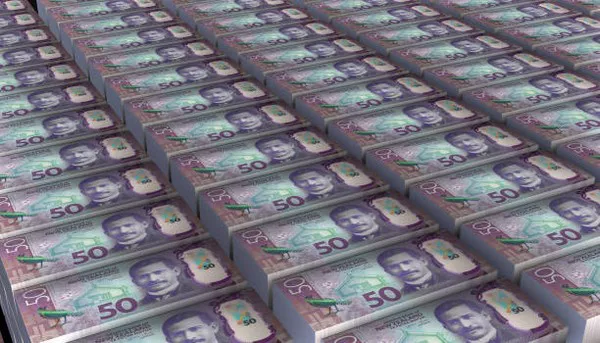In New Zealand, the $2 coin holds a prominent place in the country’s currency system. As one of the higher denominations in circulation, the $2 coin plays a crucial role in everyday transactions and represents an integral part of New Zealand’s monetary landscape. This article aims to provide a comprehensive overview of the $2 coin in New Zealand, exploring its design, history, usage, and significance within the context of the country’s economy and culture.
Design and Specifications
The $2 coin in New Zealand features distinctive design elements that reflect the nation’s heritage, culture, and natural beauty. Typically composed of nickel-plated steel, the $2 coin is bi-metallic, with a copper-nickel center surrounded by a nickel-plated outer ring. The obverse side of the coin typically features the portrait of Queen Elizabeth II, the reigning monarch of New Zealand, along with the denomination “Two Dollars” and the year of issue.
On the reverse side, the $2 coin often showcases iconic symbols and motifs representing New Zealand’s identity and heritage. Common designs include the New Zealand national emblem, the kiwi bird, traditional Maori symbols, and native flora and fauna. These designs celebrate the country’s rich cultural diversity and natural heritage, making the $2 coin a symbol of national pride and unity.
History and Evolution
The introduction of the $2 coin in New Zealand can be traced back to the country’s transition to decimal currency in 1967. Initially, the $2 denomination was issued as a banknote, but it was eventually replaced by a coin in 1990 due to its longer lifespan and durability. Since then, the $2 coin has become an essential component of New Zealand’s coinage system, alongside other denominations such as the $1 coin and smaller denominations.
Over the years, the design of the $2 coin has undergone various revisions and updates to reflect changing cultural and aesthetic preferences. While the basic specifications of the coin have remained consistent, new designs and commemorative editions have been periodically released to celebrate significant events, anniversaries, and milestones in New Zealand’s history.
Usage and Circulation
The $2 coin is widely used in everyday transactions across New Zealand, ranging from small purchases to larger transactions. With its relatively high value compared to other denominations, the $2 coin is commonly exchanged for goods and services in retail establishments, supermarkets, and vending machines. Additionally, the $2 coin is often used in parking meters, public transportation fare systems, and coin-operated facilities.
Despite its widespread usage, the $2 coin is also prized by collectors and numismatists for its unique designs, limited editions, and historical significance. Collectors often seek out rare or commemorative $2 coins issued by the Reserve Bank of New Zealand and the New Zealand Mint, adding to the coin’s cultural and numismatic appeal.
Significance and Cultural Impact
Beyond its practical utility, the $2 coin holds symbolic significance and cultural value in New Zealand society. As a tangible representation of the nation’s currency and identity, the $2 coin embodies themes of resilience, innovation, and unity. Its diverse designs and motifs reflect the country’s rich history, cultural heritage, and natural beauty, serving as a source of pride and inspiration for New Zealanders of all backgrounds.
Moreover, the $2 coin serves as a reminder of the importance of financial literacy and responsible money management. By familiarizing themselves with the various denominations and values of coins, individuals can develop essential skills in budgeting, saving, and financial planning, contributing to their overall financial well-being and empowerment.
In conclusion, the $2 coin occupies a central position in New Zealand’s currency system, serving as both a practical medium of exchange and a symbol of national identity and pride. With its distinctive designs, rich history, and widespread usage, the $2 coin continues to play a vital role in the daily lives of New Zealanders and remains a cherished artifact of the country’s cultural and numismatic heritage.
FAQs
What is the composition of the $2 coin in New Zealand?
The $2 coin in New Zealand is typically composed of nickel-plated steel, with a copper-nickel center surrounded by a nickel-plated outer ring. This bi-metallic composition enhances the durability and longevity of the coin, making it suitable for circulation in everyday transactions.
Who appears on the obverse side of the $2 coin?
The obverse side of the $2 coin in New Zealand typically features the portrait of Queen Elizabeth II, the reigning monarch of New Zealand. This portrait is accompanied by the inscription “Two Dollars” and the year of issue, providing essential information about the coin’s denomination and minting date.
What are some common designs found on the reverse side of the $2 coin?
The reverse side of the $2 coin often showcases iconic symbols and motifs representing New Zealand’s identity and heritage. Common designs include the New Zealand national emblem, the kiwi bird, traditional Maori symbols, and native flora and fauna. These designs celebrate the country’s rich cultural diversity and natural beauty.
How widely is the $2 coin used in New Zealand?
The $2 coin is widely used in everyday transactions across New Zealand, ranging from small purchases to larger transactions. It is commonly exchanged for goods and services in retail establishments, supermarkets, vending machines, parking meters, public transportation fare systems, and coin-operated facilities.
Are there any rare or commemorative editions of the $2 coin?
Yes, there are rare or commemorative editions of the $2 coin issued by the Reserve Bank of New Zealand and the New Zealand Mint. These special editions may feature unique designs, limited mintages, and commemorate significant events, anniversaries, or milestones in New Zealand’s history. Collectors and numismatists often seek out these rare or commemorative $2 coins for their cultural and numismatic value.


